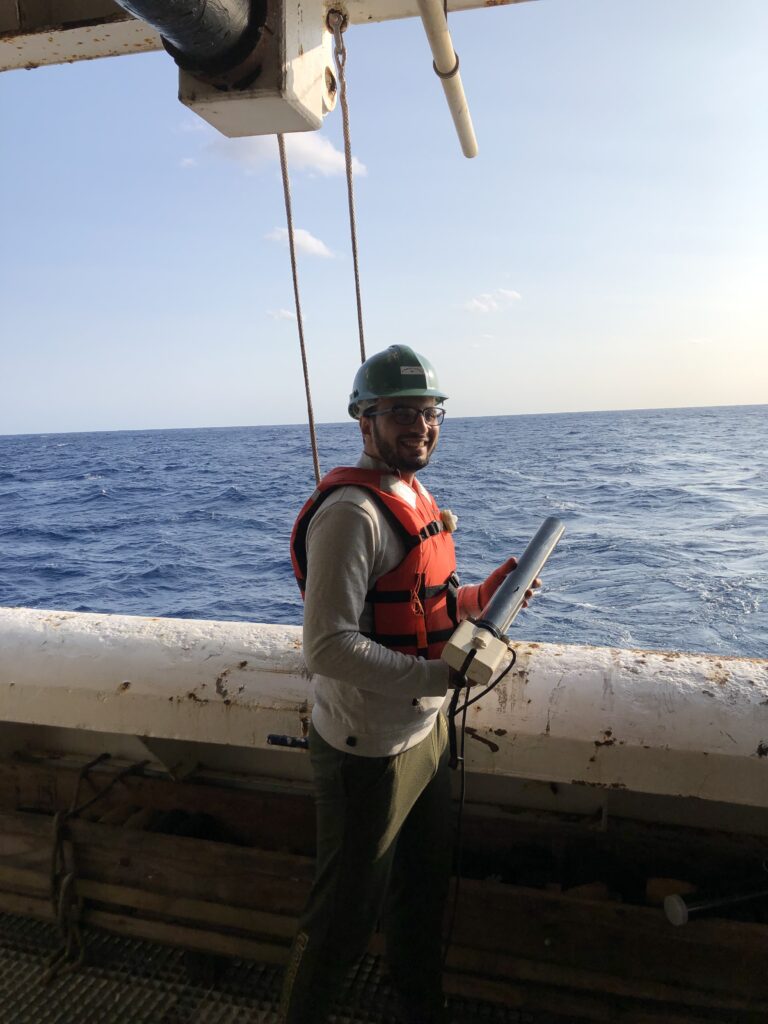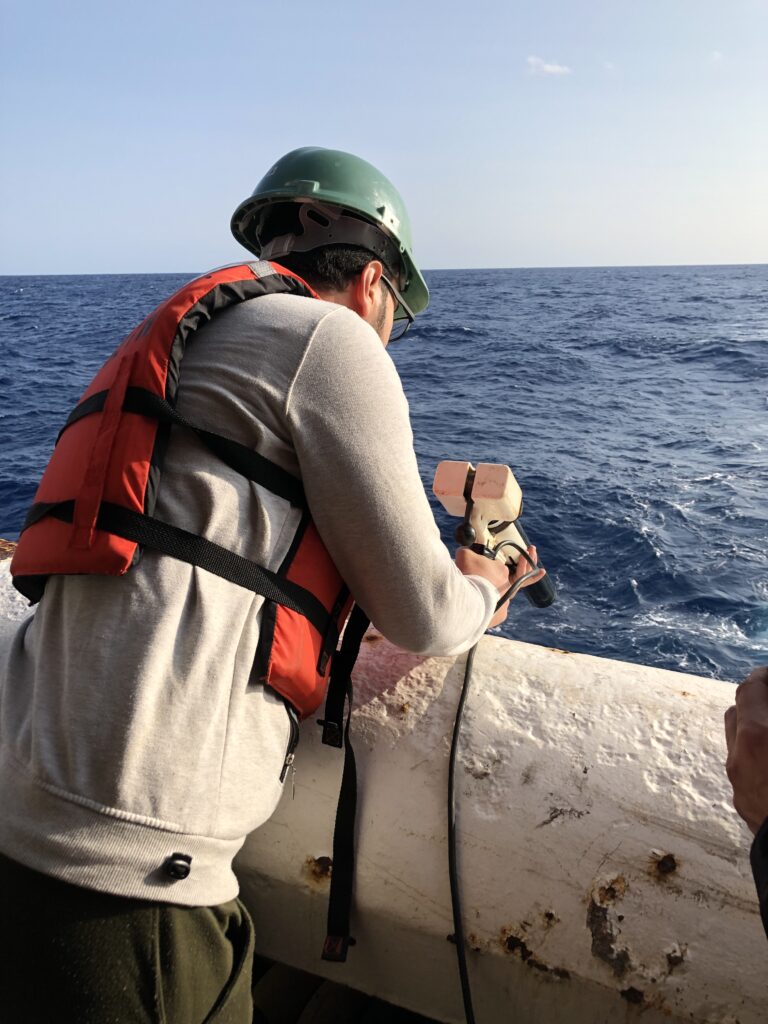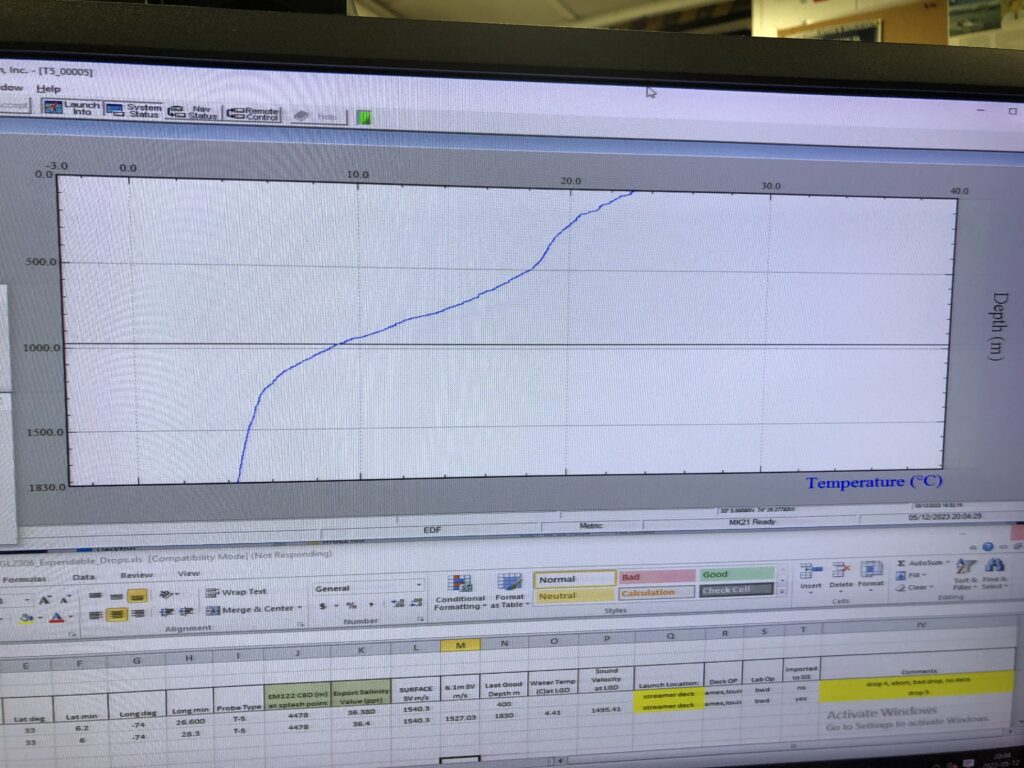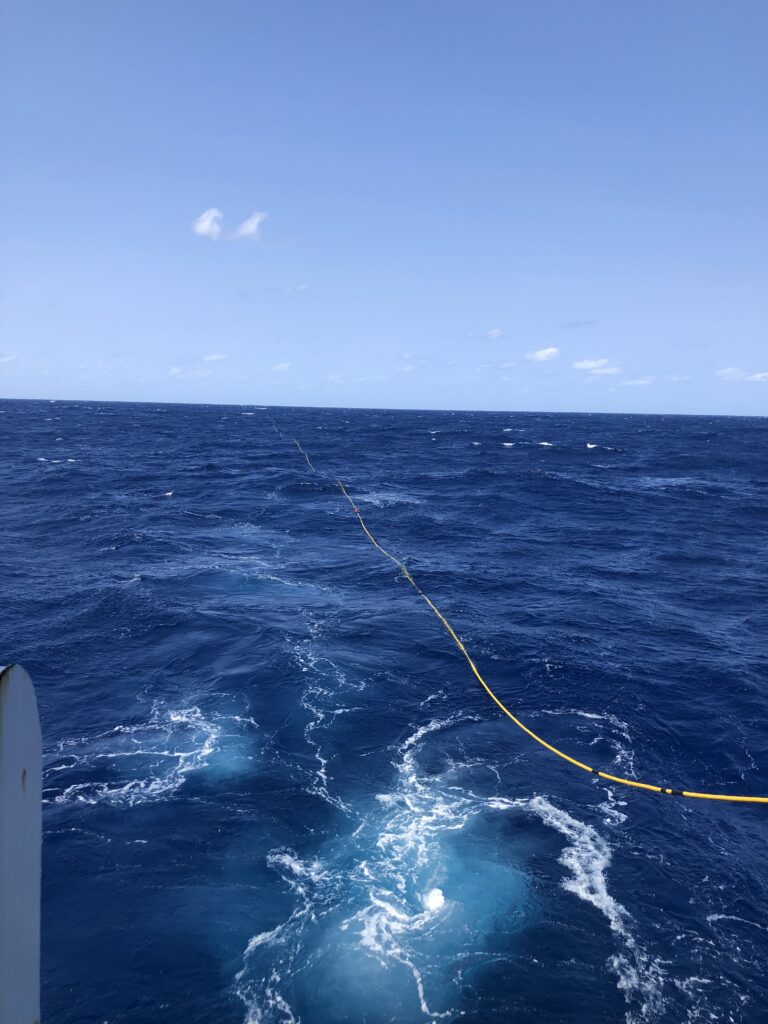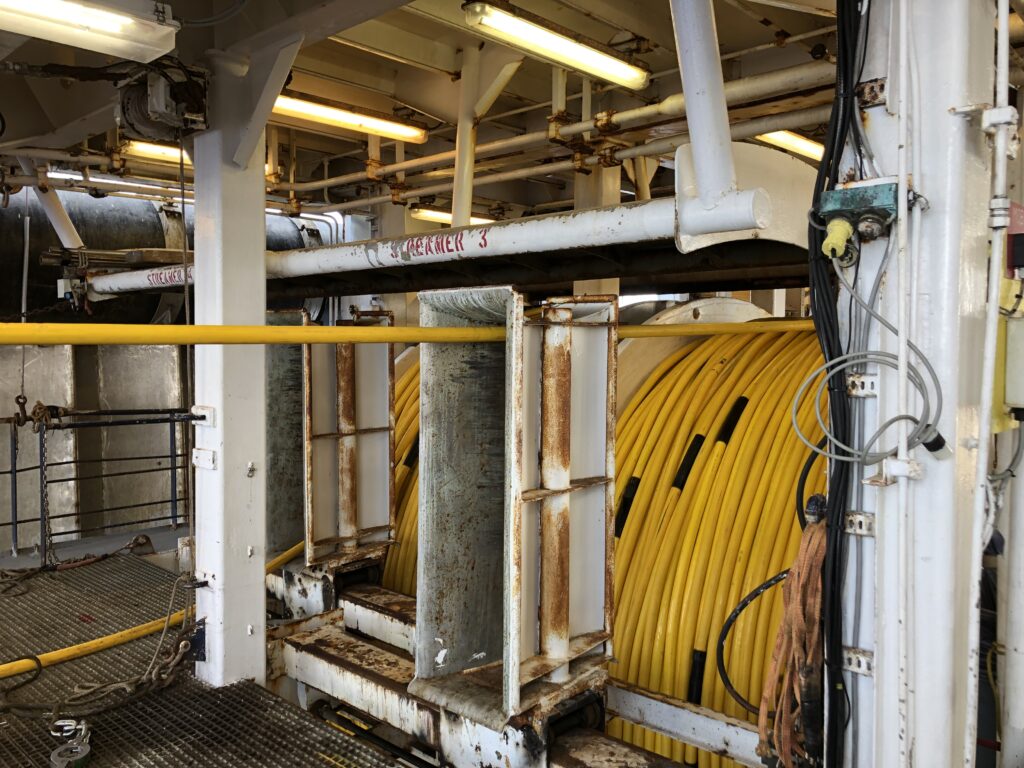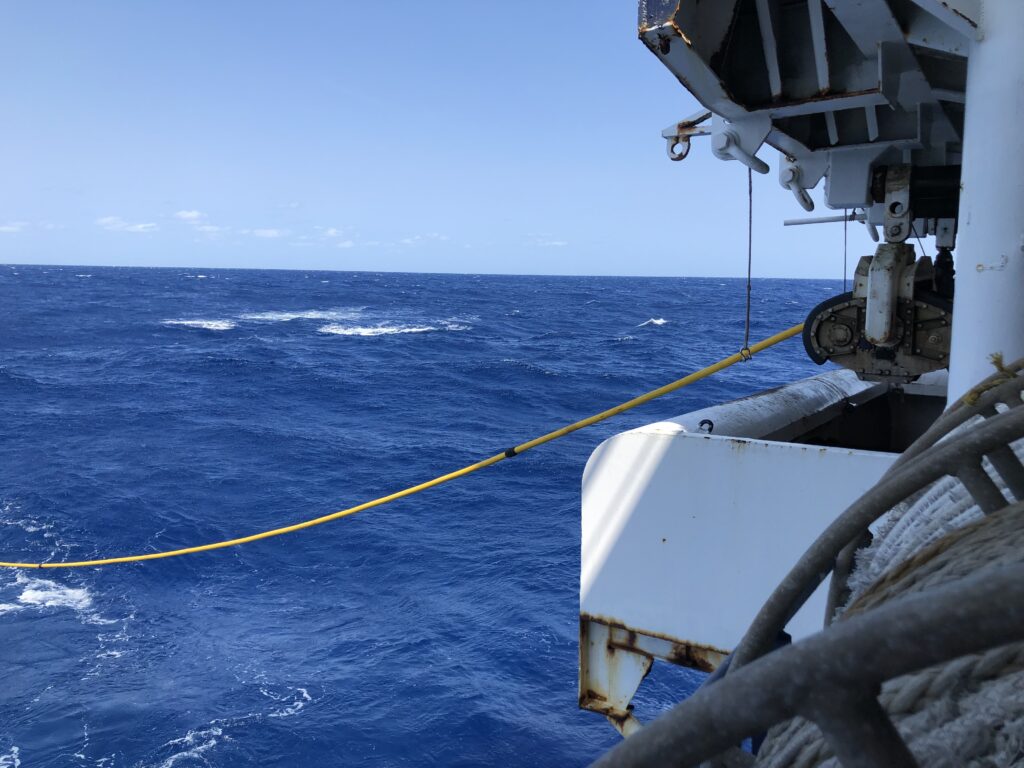We use sonar to measure water depth, and to do that we need to know how fast sound travels in the water. The speed of sound in water depends on temperature and salinity. So, how do we measure that so we ensure that our depth measurements are accurate? We use a scientific instrument called an expandable bathythermograph, or XBT. It’s simply a little probe attached to copper wire that we launch into the water. As it falls, it measures temperature, pressure, and electrical conductivity, which is converted to salinity. Temperature and salinity then give us the seawater density, which along with the pressure can be used to calculate depth. It’s a simple piece of equipment that gives us the information we need to map the seafloor. Here are some pictures of Ali launching an XBT from the streamer deck.
